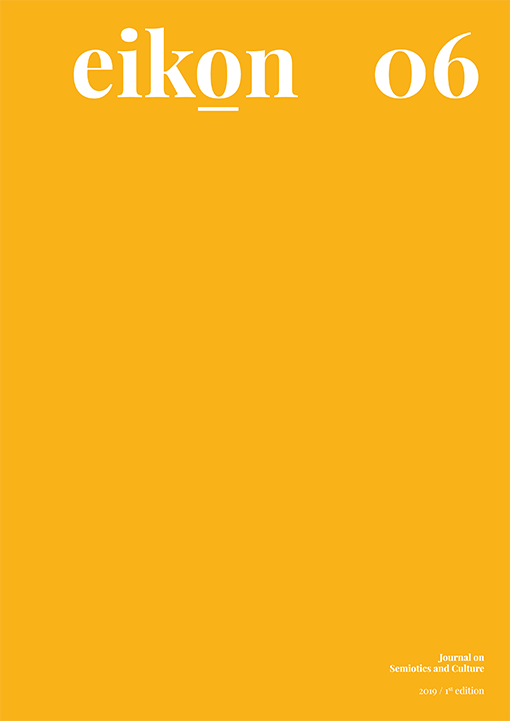Graffiti and social criticism: a discursive analysis of the indigenous figure in Cranio's art
Keywords:
graffiti, urban art, indigenous, critical discourse analysis, cultural representationAbstract
This paper discusses graffiti as manifestation of urban culture. It seeks to reflect this art as symbolic appropriation of public space, which has its origin associated with cave paintings and passes through the writings and drawings of civilizations of the Old Age. Graffiti, which today presents itself as cultural mark of the metropolises, circulating among protest speeches, political and cultural resistance, among others. This article analyzed the work of brazilian artist Cranio, who uses the figure of a blue indigenous - as symbol of his art, associated with an approach of resistance and social criticism. The Critical Discourse Analysis proposed to Fairclough is the theoretical and methodological approach selected to based this work.
References
Ashcroft, Bill (2001). Language and race in Roxy. In Harris and Rampton, Ben (Ed.) (2003). The language, ethnicity and race reader . London: Routledge, p. 37-53.
Braga, Felipe E. B. (2018). Estética spray: o grafite no campo da arte contemporânea. (Dissertação de mestrado em Filosofia, Letras e Ciências Humanas apresentada na Universidade de São Paulo). Disponível em: https://teses.usp.br/teses/disponiveis/8/8132/tde-16052019-123445/pt-br.php
Diego, Jesús de (2000). Graffiti. La palabra y la imagen. Barcelona, Los Libros de la Frontera.
Fernández, E. C. G., González, S. S., Molano, M. M. M. & Peña, G. U. (2000). Historia general de la imagen. Perspectivas de la comunicación audiovisual. Madrid: Universidad Europea-CEES Ediciones.
Fairclough, Norman (1992). Discourse and social change. Cambridge: Polity Press.
Fairclough, Norman (1997). Discurso, mudança e hegemonia. In Pedro, Emília R. (Org.). Análise crítica do discurso. Lisboa: Editorial Caminho. pp. 77-104.
Giraldin, Odair (2010). Aculturação e interculturalidade no Brasil: duas faces (duas fases) da mesma moeda. In Rocha, Leandro M., Silva, Maria S. P., Borges, Mônica V. Cidadania, interculturalidade e formação de docentes indígenas . Goiânia, Ed. PUC Goiás. pp. 41-58.
Gramsci, Antônio (2001). Cadernos do cárcere , Volume 2 . 2. ed. Rio de Janeiro: Civilização Brasileira.
Gontijo, Mariana F. (2012). O direito das ruas: as culturas do graffiti e do hip hop como constituintes do patrimônio cultural brasileiro. (Dissertação de mestrado em Direito apresentada na Universidade Federal de Minas Gerais). Disponível em: https://repositorio.ufmg.br/handle/1843/BUOS-8XTPMV
Hall, Stuart (Ed.) (1997). Representation: cultural representations and signifying practices. Londres: Open University Press.
Silva, Francisca C. O. (2009). A construção social de identidades étnico-raciais: uma análise discursiva do racismo no Brasil. (Tese de Doutoramento em Linguística apresentada na Universidade de Brasília). Disponível em [url]
https://repositorio.unb.br/bitstream/10482/4180/1/2009_FranciascaCordeliaOliveiradaSilva.pdf
Sousa, Sebastião R. de (2017). A identidade indígena Ticuna . (Tese de Doutoramento
em Sociedade e Cultura na Amazônia apresentada na Universidade Federal do Amazonas). Disponível em [url]
https://tede.ufam.edu.br/bitstream/tede/6307/5/Tese_Sebasti%c3%a3o%20R.%20Sousa.pdf
Van Dijk, Teun. (1997). Semântica do discurso e ideologia. In Pedro, Emília R. (Org.). Análise crítica do discurso. Lisboa: Editorial Caminho. pp. 105-168.
Van Leeuven, Theo. (1997). A representação de actores sociais. In Pedro, Emília R. (Org.). Análise crítica do discurso. Lisboa: Editorial Caminho. pp. 169-222.
Downloads
Published
Issue
Section
License
Authors who publish with this journal agree to the following terms:
- Authors retain copyright and grant the journal right of first publication with the work simultaneously licensed under a Creative Commons Attribution License that allows others to share the work with an acknowledgement of the work's authorship and initial publication in this journal.
- Authors are able to enter into separate, additional contractual arrangements for the non-exclusive distribution of the journal's published version of the work (e.g., post it to an institutional repository or publish it in a book), with an acknowledgement of its initial publication in this journal.
- Authors are permitted and encouraged to post their work online (e.g., in institutional repositories or on their website) prior to and during the submission process, as it can lead to productive exchanges, as well as earlier and greater citation of published work (See The Effect of Open Access).

